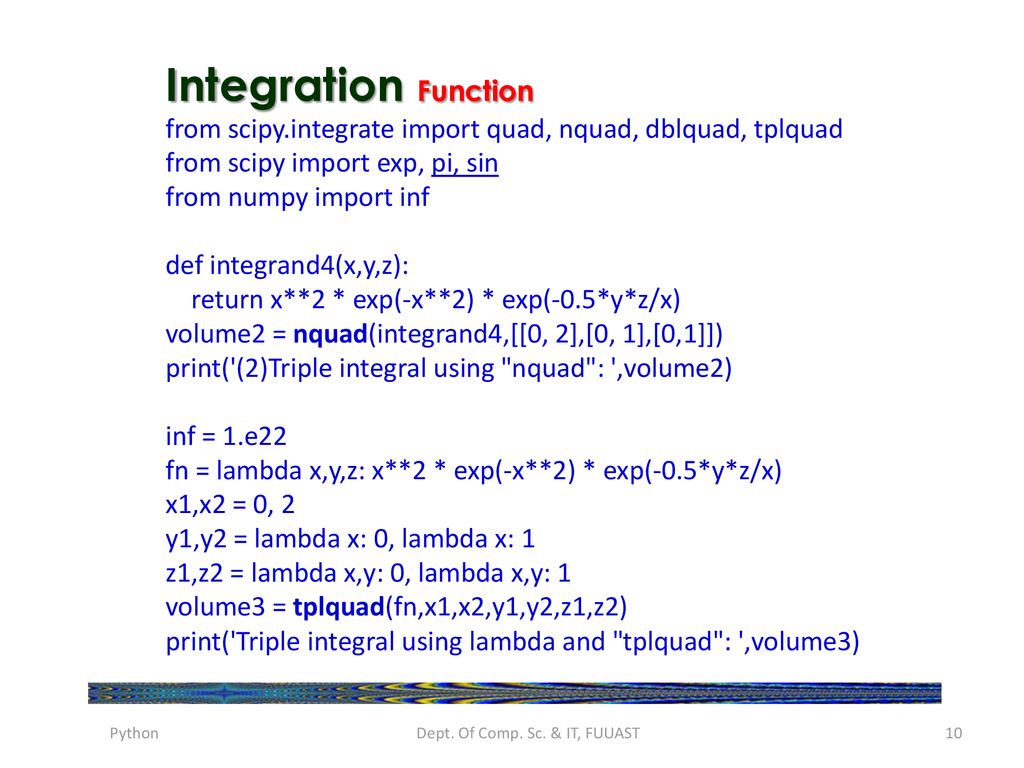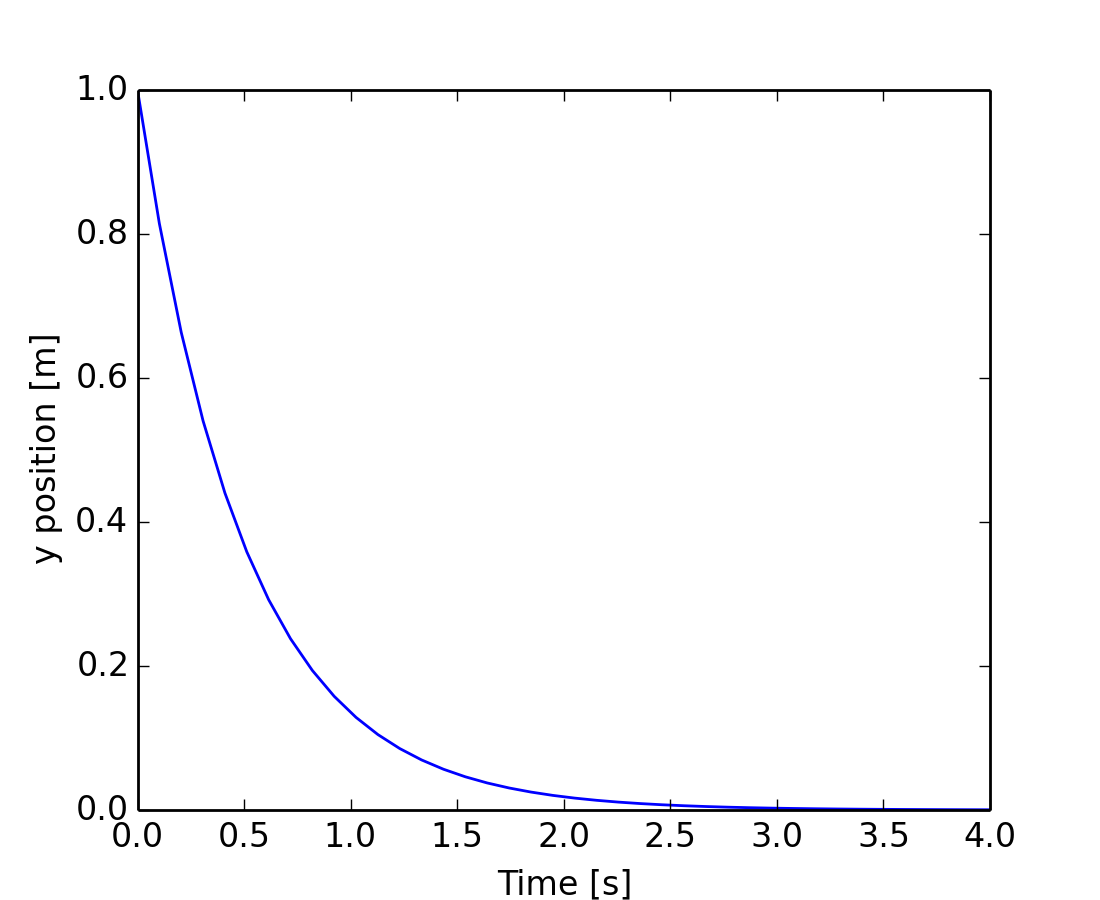

I have no idea how to iterate over entire numpy array in this case. Return quadpy.quad(f_D, -0.5, 0.5, limit=50, args=(e))īut the iteration stops at first element in z array and I have an error: Exception has occurred: TypeErrorį_D() argument after * must be an iterable, not numpy.float64 I tried to overcome this error by iterating numpy array z by modyfing: def psi_D(z): Only size-1 arrays can be converted to Python scalars Quadpy_integral = quadpy.quad(integral_P_Vm, 0, 1, limit=100)Īnd the error is in line 28: Exception has occurred: TypeError
#SCIPY QUAD CODE#
Second approach - Quadpy.quad the code is: from scipy.integrate import quad Imaginary part (9.08758050641791e-12, 3.696603118432144e-22)Īs you can see, normal quad omits imaginary part and thus I am not sure if integral in def psi_D(z): also needs to be divided into imaginary and real parts. Print("Imaginary part",P_Vm_integral_imag) P_Vm_integral_imag = quad(integral_P_Vm_imag, 0, 1, limit=100) P_Vm_integral_real = quad(integral_P_Vm_real, 0, 1, limit=100) It is normally the default choice for performing single integrals of a function f(x) over a given fixed range from a to b. Numerical integration is sometimes called quadrature, hence the name. Quad_integral = quad(integral_P_Vm, 0, 1, limit=100) The Quad function is the workhorse of SciPy’s integration functions. I tried dividing into real and imaginary parts and calculating integral values of them separately: from scipy.integrate import quad

So I am thinking about dividing integrals like in the way shown below (where Re is real part and Im is imaginary part):Īnd here are codes, where I show two ways to approach the problem. Quadpy isn't efficient also, because it passes entire numpy array instead of single values of integral (explained in code 2 below) and thus needs additional manipulation. The function quad is the workhorse of SciPy’s integration functions. If increasing the limit yields no improvement it is advised to analyze the integrand in order to determine the difficulties. Python scipy.quad doesn't calculate integrals of imaginary numbers (explained in Code 1 below). Integrate func from a to b (possibly infinite interval) using a technique from the Fortran library. When evaluating the integral below in python using scipy.quad I get the following warning: UserWarning: The maximum number of subdivisions (50) has been achieved. I want to calculate integral of implicit function containing imaginary numbers


 0 kommentar(er)
0 kommentar(er)
